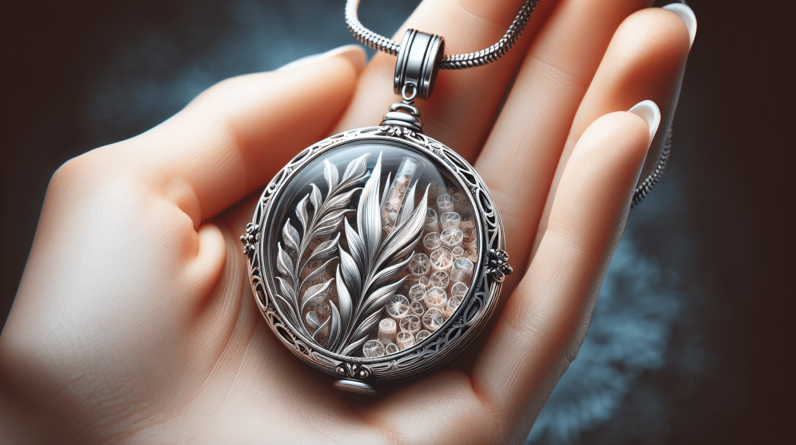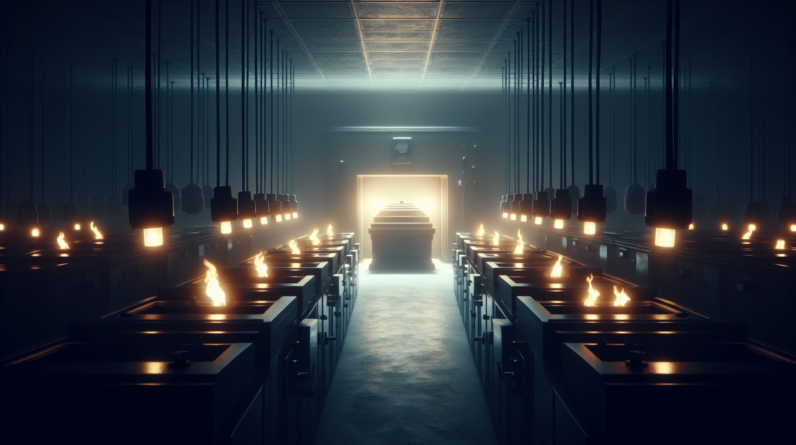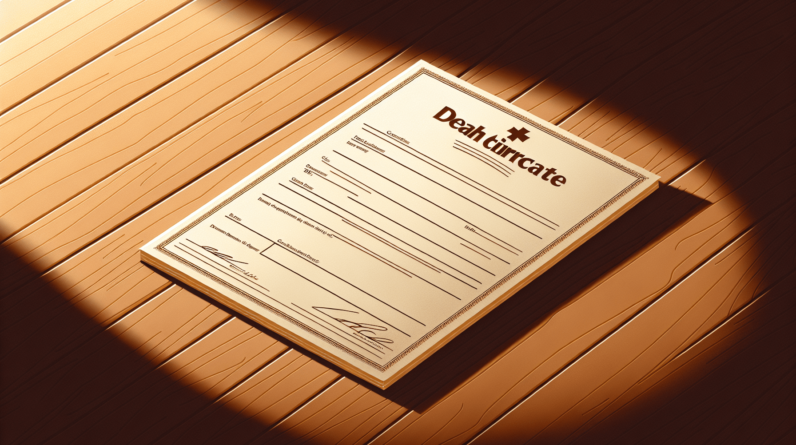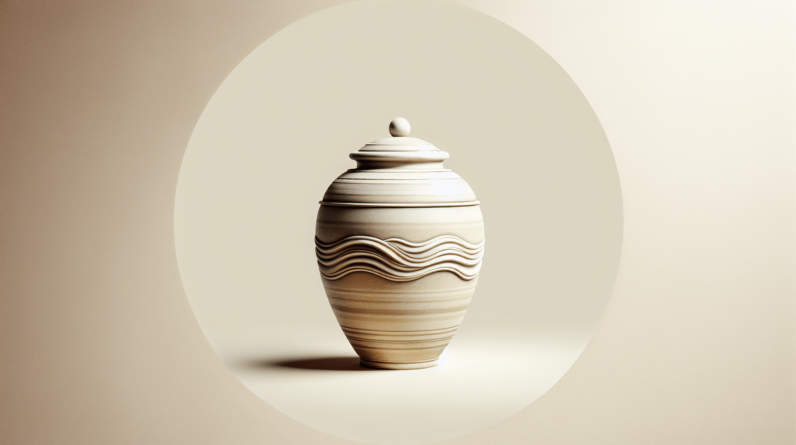So you’ve heard about cremation, but do you know the whole truth? There are often many misconceptions surrounding this alternative to traditional burials. Many people believe that cremation is harmful to the environment or that it goes against religious beliefs, but these are just myths that need debunking. According to my research, cremation is actually a more eco-friendly option, and many religions have accepted it as a respectful way to honor the deceased. Let’s uncover the truth about cremation and dispel these common misconceptions once and for all.
Cremation is the same as burning a body
Cremation is a carefully controlled process
Contrary to popular belief, cremation is not simply burning a body. It is a carefully controlled process that takes place in a specialized facility called a crematorium. The body is placed in a cremation chamber, also known as a retort, where it is subjected to intense heat and flames. However, it’s important to note that the process of cremation is conducted in a respectful and dignified manner.
The body is treated with respect during cremation
During the cremation process, the body is treated with utmost respect. The deceased is placed in a cremation container, such as a casket or an alternative container, which is then placed in the cremation chamber. The entire process is overseen by licensed professionals who adhere to strict guidelines and protocols to ensure that the body is handled with care and dignity throughout the entire process.
Cremation does not involve open flames
Contrary to what some may think, cremation does not involve open flames. In a cremation chamber, the body is subjected to intense heat generated by gas-fired flames and the use of specialized equipment. However, the flames are contained within the cremation chamber and are not open or visible to observers. The process of cremation is a controlled and regulated procedure that ensures the respectful and dignified disposition of the deceased.
Cremation is against religious beliefs
Cremation is accepted by many religions
While there are certain religions that prohibit or discourage cremation, many religions have accepted and embraced cremation as a valid choice for final disposition. For example, Hinduism, Buddhism, and Sikhism have long-standing traditions of cremation. Additionally, many Christian denominations, such as Catholicism and Protestantism, have no religious objections to cremation, as long as it is not chosen for reasons that deny the belief in resurrection.
Religious practices can be incorporated into cremation services
For those who hold religious beliefs, cremation services can be tailored to incorporate specific religious practices and customs. Funeral homes and crematories often work closely with religious leaders and families to ensure that the cremation process aligns with their religious beliefs. This may include specific prayers, rituals, or ceremonies to honor the deceased and provide solace for mourners.
Cremated remains can be handled according to religious customs
After cremation, the cremated remains, often referred to as ashes, can be handled in accordance with religious customs. For example, in Hinduism, it is common for the ashes to be scattered in a sacred body of water, while in Christianity, the ashes may be interred in a churchyard or cemetery. Different religions may have specific guidelines and preferences for the handling and disposition of cremated remains, allowing individuals to adhere to their religious beliefs even after choosing cremation.
Cremation means you can’t have a traditional funeral
Cremation can be followed by a traditional funeral service
Contrary to the misconception that cremation excludes the possibility of a traditional funeral, cremation can be followed by a traditional funeral service. Before cremation, a visitation or wake can be held where family and friends can gather to pay their respects to the deceased. This can be followed by a formal funeral service, complete with eulogies, prayers, and music. After the funeral, the body is then taken to the crematory for the cremation process.
Memorial services can be held with or without cremated remains present
In addition to traditional funeral services, memorial services can also be held after cremation has taken place. These services can be customized to reflect the individual’s life and personality, and they can be held with or without the presence of the cremated remains. Memorial services provide an opportunity for family and friends to come together to remember and celebrate the life of the deceased, irrespective of the choice of cremation.
Cremation does not limit the options for honoring and remembering the deceased
Choosing cremation does not limit the options for honoring and remembering the deceased. In fact, cremation often allows for greater flexibility and creativity in memorialization. From scattering the ashes in a meaningful location to creating personalized urns or memory keepsakes, there are countless ways to pay tribute to the memory of a loved one. Cremation opens the door to a wide range of options for preserving and honoring the deceased’s legacy.
Cremation is less expensive than traditional burial
The cost of cremation varies depending on various factors
The cost of cremation can vary depending on a variety of factors, including the location, cremation provider, and any additional services or merchandise chosen. According to research conducted by funeral industry professionals, the average cost of cremation in the United States is generally lower than the average cost of traditional burial. However, it’s important to note that these costs can vary widely depending on individual preferences and circumstances.
Traditional burial can sometimes be more cost-effective than cremation
While cremation is often perceived as a more affordable option, there are instances where traditional burial can be more cost-effective. Factors such as the choice of casket, burial plot, and additional funeral services can significantly impact the cost of a traditional burial. It’s essential to consider individual needs, budgetary constraints, and any specific financial assistance or benefits that may be available when making a decision between cremation and traditional burial.
Financial considerations should not be the sole determining factor for choosing cremation
While cost can be a factor to consider when making end-of-life arrangements, it’s crucial not to make it the sole determining factor. The decision between cremation and traditional burial should take into account personal preferences, family dynamics, religious beliefs, and cultural traditions. It’s important to assess the overall value and significance of each option and make a choice that aligns with the deceased’s wishes and the needs of the surviving family members.
Cremation is harmful to the environment
Cremation can be an environmentally friendly option
Contrary to concerns about the environmental impact of cremation, it is possible for cremation to be an environmentally friendly option. Crematoriums are subject to strict regulations that ensure the reduction of emissions and the appropriate handling of pollutants. Many crematoriums employ advanced filtration systems and technologies to minimize the release of harmful substances into the atmosphere. Additionally, the use of alternative fuels, such as natural gas or biofuels, can further mitigate environmental impact.
Newer technologies and practices aim to reduce environmental impact
The funeral industry is constantly evolving and adopting new technologies and practices to reduce the environmental impact of cremation. From the use of energy-efficient cremation chambers to the recycling of metals and the utilization of sustainable materials for urns and caskets, efforts are being made to minimize the carbon footprint associated with cremation. The industry is actively exploring and implementing innovative solutions to ensure that cremation becomes increasingly environmentally sustainable.
Alternative forms of disposition can also be considered for those concerned about the environment
For individuals who have concerns about the environmental impact of cremation, alternative forms of disposition can be considered. Natural burials, also known as green burials, provide an environmentally friendly option where the body is interred without embalming or the use of non-biodegradable materials. Additionally, the option of donating the body to medical research or choosing aquamation, a water-based cremation process that is considered more eco-friendly than traditional cremation, can be explored as alternatives to traditional cremation.
Cremation means you can’t have a permanent memorial
Cremated remains can be placed in a permanent memorial
Contrary to the misconception that cremation means the absence of a permanent memorial, cremated remains can be placed in a permanent memorial. Urns containing the cremated remains can be interred in a cemetery, columbarium, or mausoleum, allowing for a lasting place of remembrance. Additionally, there are options for memorializing the deceased through the creation of personalized plaques, memorial walls, or garden spaces dedicated to the memory of loved ones.
Customized urns and memorial items can be created to honor the deceased
Cremation offers the opportunity for personalization, allowing families to create customized urns and memorial items that honor the deceased’s unique personality and interests. From engraved urns and memorial jewelry to personalized keepsakes and artwork, there is a wide array of options available to create meaningful and lasting tributes. These personalized items can serve as a tangible reminder of the deceased and can be cherished by family members for years to come.
Various options are available for preserving and displaying cremated remains
Cremated remains can be preserved and displayed in various ways, offering an abundance of options for families to honor and remember their loved ones. From scattering the ashes in a designated area to placing them in cremation jewelry, creating memorial diamonds, or incorporating the ashes into artwork or glass pieces, families have the freedom to choose a display method that best reflects the unique connection they had with the deceased.
Cremation is a quick and impersonal process
Cremation can be personalized and meaningful
Contrary to the misconception that cremation is a quick and impersonal process, it can be personalized and meaningful. Families can choose to be involved in the cremation process, such as witnessing the placement of the cremation container in the cremation chamber or participating in a prayer or ritual during the process. This level of involvement can provide a sense of closure and the opportunity to say a final goodbye in a personal and meaningful manner.
Families can be involved in the cremation process if desired
For those who wish to be more directly involved, many crematories offer the option of family members participating or overseeing certain aspects of the cremation process. This may include the signing of necessary paperwork, the selection of the cremation container, or being present at the start of the cremation process. This involvement can provide a sense of comfort and reassurance, knowing that their loved one’s final journey is being handled with care.
Memorial services can be tailored to reflect the individual’s life and personality
Following cremation, memorial services can be designed to celebrate and honor the individual’s life in a way that reflects their unique personality and interests. From themed memorial services to incorporating favorite music, photographs, and mementos, the possibilities are endless. Memorial services can be as formal or informal as desired, allowing family and friends to come together to share memories and find solace in their shared grief.
Cremation means you can’t have an open casket viewing
Cremation does not exclude the possibility of viewing the deceased
Contrary to the misconception that cremation precludes an open casket viewing, it is possible to have a viewing before cremation takes place. Prior to the cremation process, a traditional funeral service can be arranged, allowing family and friends to pay their final respects to the deceased. The open casket viewings can provide an opportunity for closure and the chance to say goodbye in a physical and visual manner.
Before cremation, a traditional funeral with open casket viewing can be arranged
For those who desire an open casket viewing, a traditional funeral can be organized before the cremation process. The body can be prepared for viewing, with embalming or refrigeration ensuring that the deceased will be presentable to family and friends. This allows loved ones to gather, pay their respects, and say their final goodbyes, offering a sense of closure and the opportunity for shared mourning.
Memorial services can include photographs and personal items for remembrance
Even if an open casket viewing is not desired or chosen, memorial services can incorporate photographs and personal items as a way of remembering and celebrating the life of the deceased. Displaying photographs, creating memory boards, or showcasing cherished belongings can evoke cherished memories and provide a visual representation of the person’s life. The focus shifts from a physical presence of the body to the lasting impact the individual had on the lives of others.
Cremation means the ashes are all that remains
Cremated remains are not always the end result of the process
While cremated remains, commonly known as ashes, are the most recognizable outcome of the cremation process, they are not always the only result. Certain materials, such as metal implants and jewelry, may remain after cremation. These materials are typically separated from the cremated remains and can be returned to the family or disposed of in a respectful manner. It’s important to have open conversations with the crematory about any concerns or questions regarding the final disposition.
Other items such as jewelry and metal implants may remain after cremation
During the cremation process, any metal implants or jewelry that the deceased had may remain intact. Before the cremation, steps are taken to remove these items from the body to the best of the crematory’s ability. These items can then be returned to the family, if desired, or disposed of in a meaningful way. It’s essential to communicate any preferences or instructions regarding these items to the crematory.
Cremation does not fully eliminate all traces of the body
Although the cremation process is designed to break down the body into cremated remains, it does not entirely eliminate all traces of the body. Cremated remains consist primarily of calcium phosphate, which comes from the bone structure. Despite the transformation, it’s important to recognize that these remains still hold a symbolic connection to the deceased. Cremation provides an opportunity to remember the person’s life, even when the physical body is no longer present.
Cremation is a taboo topic to discuss
Cremation is a legitimate and widely accepted choice for final disposition
Cremation is becoming increasingly accepted as a legitimate choice for final disposition. As societal norms and attitudes continue to evolve, more individuals and families are choosing cremation as a way to honor their loved ones’ wishes or as a practical and meaningful option. It’s essential to recognize that discussing cremation openly and without judgment can help reduce any stigma associated with the topic.
Discussing cremation can help alleviate fears and misconceptions
Open and honest conversations about cremation can help alleviate fears and misconceptions surrounding the process. Sharing knowledge and personal experiences can provide insight and reassurance to those considering cremation. By addressing concerns, answering questions, and providing accurate information, individuals can make well-informed decisions about their final wishes and understand the various options available to them.
Open and honest conversations can help individuals make informed decisions about their final wishes
When it comes to choosing cremation or any other form of final disposition, open and honest conversations are crucial. Discussing preferences, concerns, and cultural or religious beliefs can guide individuals in making informed decisions about their final wishes. These conversations can also help ensure that family members are aware of and respect those wishes, alleviating the burden of decision-making during a time of grief.
As the misconceptions surrounding cremation persist, it is crucial to provide accurate information and dispel any myths associated with the process. Cremation is a carefully controlled and respectful method of final disposition, accepted by many religions and offering a wide range of options for memorialization. Financial considerations, environmental impact, personalization, and the ability to have viewings or permanent memorials are all key factors that should be taken into account when making decisions about end-of-life arrangements. Open conversations about cremation can help individuals make choices that align with their beliefs, values, and personal preferences, ensuring a peaceful and meaningful journey beyond life.






